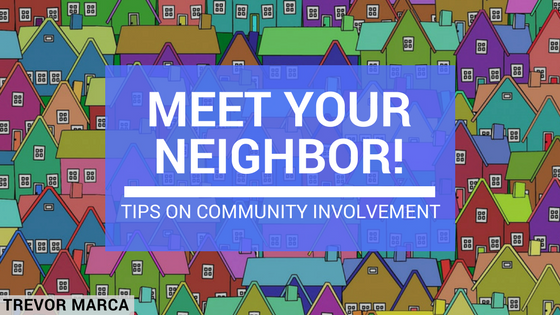You come home from work at six-thirty, digging for your keys in your briefcase, and it happens: you look up for a split second and make painfully awkward, drawn-out eye contact with the neighbor as you both try to figure out what to say. They moved in a month ago, but you still can’t remember their name or what they do, only that they have a dog that barks too loudly at night. You both settle for too-loud calls of “Hello!” and redouble your key-finding efforts, desperate to leave the situation.
Neighborhoods don’t have to be this awkward.
In fact, research suggests that a positive, constructive neighborhood community requires interpersonal engagement. A study conducted by the Search Institute in Minneapolis found that “Healthy society […] requires the mobilization of social networks and social norms to support the pursuit of shared goals and the meaningful participation of citizens in building and being community.”
In other words, a supportive, communicative interpersonal network within a neighborhood is necessary to construct a positive environment for those living there. Moreover, researchers for the study found that interpersonal suspicion, unhealthy isolation, and even juvenile crime is more likely to occur in disengaged communities.
The truth is clear: engaged, friendly neighborhoods are the foundation for safer and healthier environments, and are particularly vital for families with growing children. So how do we stop the awkwardness and engage with our neighbors?
- Strike up a conversation.
Instead of diving for the keys, say hello to that neighbor. Introduce yourself. The first step to building a community is to build relationships with those around you. People care about those they know – so ask that new neighbor their name! Strike up informal chats with those living around you, or gather individuals you know into a casual group discussion. As time goes on, you might even begin to talk about goals you have for the neighborhood, and what you might do to achieve them. Start a welcoming committee for new neighbors!
- Organize a neighborhood gathering.
This can be as small as an informal potluck or movie night in someone’s backyard, or as large as a block party! The key is to meet and build relationships with those around you. After all, who doesn’t like food?
- Build neighborhood teams.
Team sports or group philanthropy boosts morale and shifts those around you from neighbors to friends – so set a weekly pickup basketball time, or plan a group trip to help out at the local soup kitchen!
- Offer a helping hand.
At the end of the day, a community-centered neighborhood is a support system. If you know that the person across the street needs something that you can help out with – whether that need be food, babysitting, or just a kind word – reach out! Days, months, or even years down the line, your neighborhood may be a vital source of support when you need it most.
Trevor Marca is an entrepreneur and marketing professional who specializes in bolstering community ties through print and digital media. For more on Trevor, visit his website.

